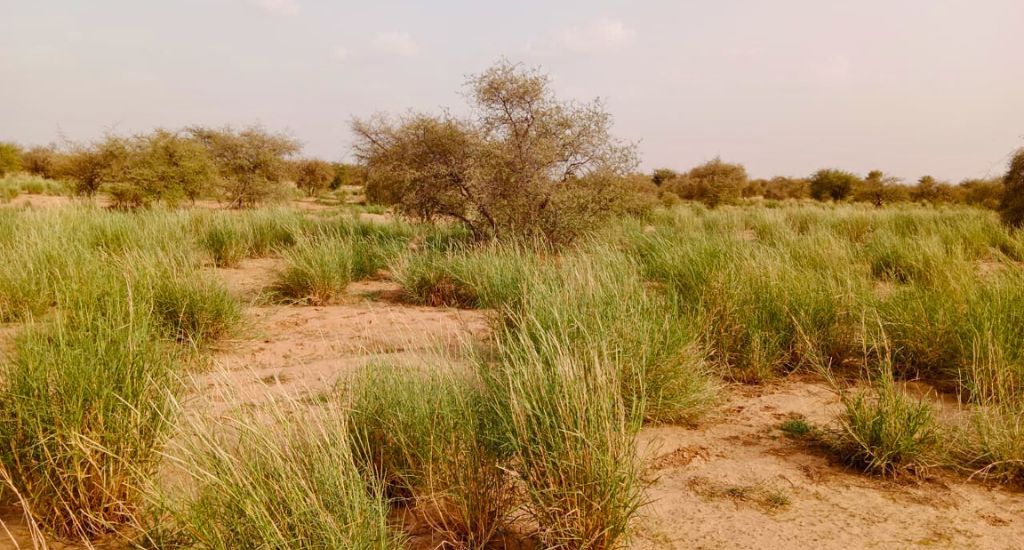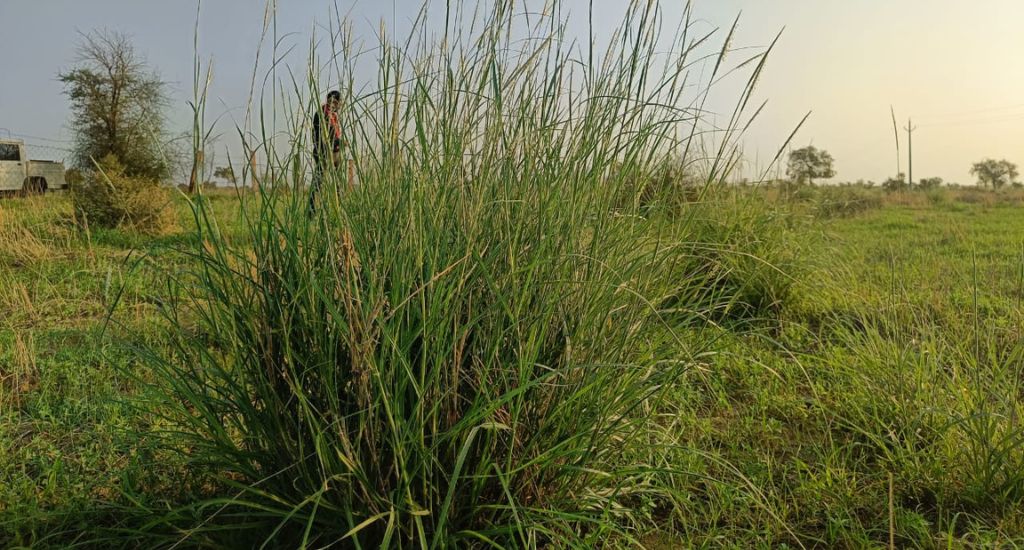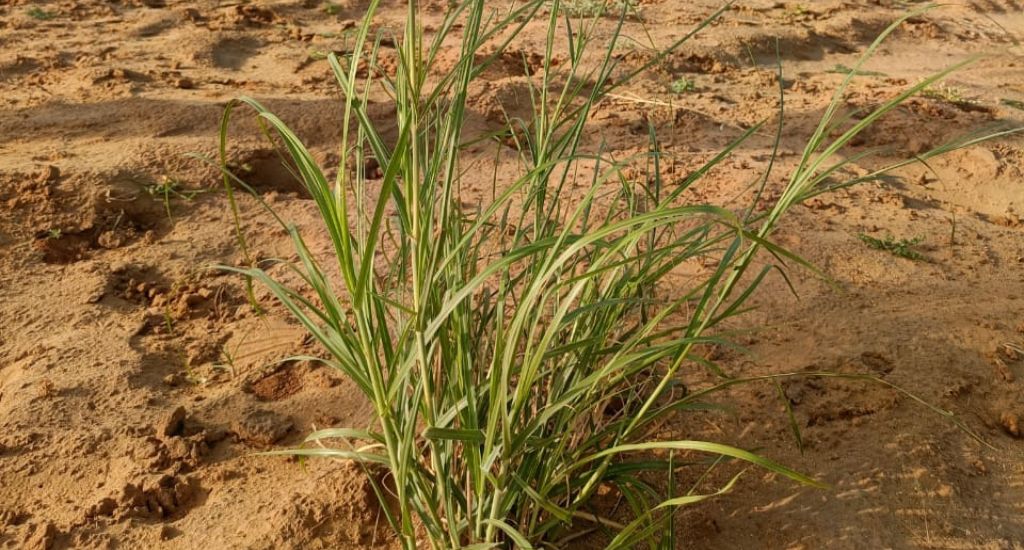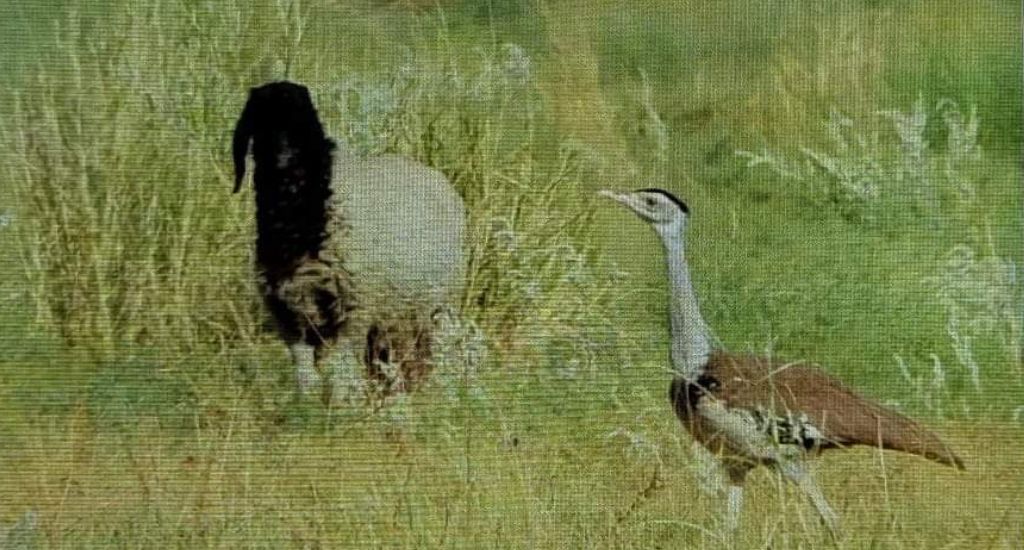
Turning towards golden grass to conserve great Indian bustard
In an effort to save the endangered great Indian bustard, farmers in Rajasthan are regrowing the sewan grass that provides a good habitat for the birds.

In an effort to save the endangered great Indian bustard, farmers in Rajasthan are regrowing the sewan grass that provides a good habitat for the birds.
“They like sewan, the tall and bushy grass in western Rajasthan,” said Radeshyam Bishnoi, a farmer and conservationist from Pokhran tehsil of Jaisalmer district. He is talking about Lasiurus scindicus grass being the favourite shelter for the great Indian bustard.
Locally called godawan, the great Indian bustard (GIB) is facing the impact of development and is critically endangered now. It is listed under Schedule I of the Wildlife (Protection) Act 1972. The GIBs are large birds standing about one metre tall and weighing 15-18 kg.

The GIB is found in the grasslands of Pakistan and India. Unlike people, the bird is not affected by the barbed wire of Partition. But its wings and feathers get caught in high tension electric wires that cross through the birds’ habitat.
The GIBs have wide sideways vision to maximise predator detection. But the species’ frontal vision is narrow. Unable to detect power lines from far, they fail to manoeuvre quickly when high tension power lines cross their path, making collision and death inevitable.
“They don’t see their death. But we see them dying. It’s painful,” said Sumer Singh, a local environmentalist.
The GIB population is 120-150 in Rajasthan, accounting for 95 percent of its total world population.
Watch: The critically endangered Great Indian Bustard (GIB)
“As much as 80 percent of the total mortality can be attributed to the power lines,” said Bishnoi. “They may save themselves from the electricity, but the fall makes their death certain.”
Another major reason for the loss of the heaviest flying bird is the loss of grassland. The GIBs live in two habitats – one near Pokhran and the other in the Desert National Park near the towns of Jaisalmer and Barmer in Rajasthan.

“Loss of GIBs is a corollary to the loss of grassland,” said Sumit Dookia, honorary scientific advisor at Ecology, Rural Development & Sustainability (ERDS) Foundation.
Singh agrees.
“The GIBs used to visit these areas earlier. With the loss of sewan grass and reduced population, we no longer see them often,” said Singh. “The rainfall pattern has also changed and sewan has not adapted to it, resulting in its loss.”
ERDS Foundation has been trying to restore the grassland with community support. In Dholia, the sarpanch has sanctioned 50 hectares of land for growing sewan grass under the Mahatma Gandhi National Rural Employment Guarantee Scheme (MGNREGS). ERDS Foundation, along with the Habitats Trust, New Delhi, is monitoring a total of 70 hectares around the village, besides helping the local farmers grow sewan in another 10 acres.
Interview: ‘Only about 100 great Indian bustards remain now’
“To grow sewan, we chose the area that GIBs frequented,” said Dookia.
Currently, four areas – Dholia, Khetolai, Lakhi and Chandan – in Pokhran are developing sewan grasslands. In the 10 hectares that the ERDF monitors, the first set of sewan seeds were planted. As much as 95 percent of the seeds didn’t germinate.
“There were two reasons – they were old seeds, and it didn’t rain on time,” said Dookia. “So we started watering them using buckets and planting saplings of sewan like how we plant paddy.”
Singh grows sewan grass in 10 hectares in Fatehgarh tehsil of the district.
“The government must provide subsidies to the community growing sewan,” said Singh. “Since the grass is tall and bushy, GIBs can take shelter amid the growth and their eggs remain hidden from predators like stray dogs and wild foxes.”

Beetles and small insects are the favourite foods of GIBs. In the thick and wavy sewan grass, their presence is natural, providing food for the endangered bird.
GIBs apart, sewan provides a natural balance in the ecosystem. It’s nutritious and thus provides good fodder for the cows. Dried sewan grass is used as dry fodder.
Also Read: Elephants to buffaloes – species you didn’t think are endangered
“It’s called the king of the desert grasses, and also the golden grass of Jaisalmer,” said Singh. “We are doing our best to restore the grassland. But until the power lines, both solar and wind, are not moved underground, the GIBs will continue to face a survival problem.”
The lead image at the top shows sewan grass growing in Pokhran region of Rajasthan (Photo by Sumer Singh)
Amir Malik is a freelance journalist based in Bihar. He writes about health, women and children and their interaction with nature. He is a Rural Media Fellow 2022 at Youth Hub, Village Square.